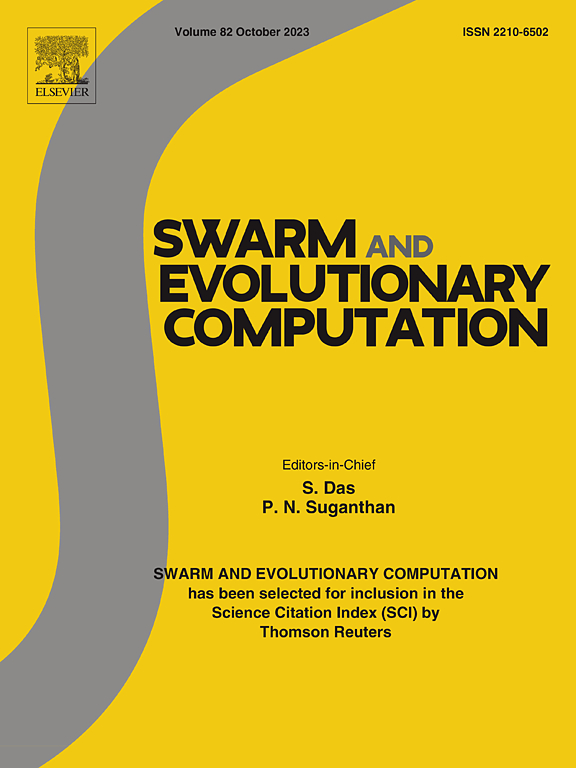非线性系统离散PID控制的最优整定
IF 8.2
1区 计算机科学
Q1 COMPUTER SCIENCE, ARTIFICIAL INTELLIGENCE
引用次数: 0
摘要
本文研究了分段仿射逼近技术在非线性系统控制中的应用,重点研究了用k阶差分方程x[n+k]+f(x[n],x[n+1],…,x[n+k−1])=u[n]描述的系统的有效线性化。所提出的方法采用分段线性化,将非线性函数f划分为紧定义域D∧Rk内的简单函数。参数h决定了线性段的数量,控制了近似的精度。随着h的增大,线性化系统的行为均匀收敛于原非线性系统的行为,有利于提高控制系统的性能。该方法的一个关键优点是它不需要完全了解非线性函数f;只需要选定节点上的值。进一步证明f在分划的每一子域内连续可微是充分的。如果梯度和f的Hessian边界在每个单元内可用,则可以严格估计总近似误差。此外,该研究还结合了PID控制器,并利用粒子群优化(PSO)算法对控制器参数进行优化。优化框架旨在最小化积分时间绝对误差(ITAE)和积分平方超调(ISO)等关键性能指标。数值仿真证明了该方法的有效性,突出了其在非线性控制系统设计中平衡计算复杂性和近似精度的能力。本文章由计算机程序翻译,如有差异,请以英文原文为准。
Optimum settings for discrete PID control of nonlinear systems
This study investigates the application of piecewise affine approximation techniques for the control of nonlinear systems, focusing on the effective linearization of systems described by the th order difference equation . The proposed approach employs piecewise linearization by partitioning the nonlinear function into simplices within a compact domain . The parameter , which determines the number of linear segments, governs the precision of the approximation. As increases, the linearized system’s behavior converges uniformly to that of the original nonlinear system, facilitating improved control system performance.
A key advantage of the approach is that it does not require full knowledge of the nonlinear function ; only values at selected nodal points are needed. Furthermore, it is sufficient that is twice continuously differentiable within each subdomain of the partition. If bounds on the gradient and Hessian of are available within each cell, the total approximation error can be rigorously estimated.
In addition, the study incorporates PID controllers and leverages the Particle Swarm Optimization (PSO) algorithm to optimize controller parameters. The optimization framework is designed to minimize key performance indices, such as the Integral Time Absolute Error (ITAE) and Integral Squared Overshoot (ISO). Numerical simulations demonstrate the efficacy of the proposed method, highlighting its ability to balance computational complexity with approximation accuracy in nonlinear control system design.
求助全文
通过发布文献求助,成功后即可免费获取论文全文。
去求助
来源期刊

Swarm and Evolutionary Computation
COMPUTER SCIENCE, ARTIFICIAL INTELLIGENCEC-COMPUTER SCIENCE, THEORY & METHODS
CiteScore
16.00
自引率
12.00%
发文量
169
期刊介绍:
Swarm and Evolutionary Computation is a pioneering peer-reviewed journal focused on the latest research and advancements in nature-inspired intelligent computation using swarm and evolutionary algorithms. It covers theoretical, experimental, and practical aspects of these paradigms and their hybrids, promoting interdisciplinary research. The journal prioritizes the publication of high-quality, original articles that push the boundaries of evolutionary computation and swarm intelligence. Additionally, it welcomes survey papers on current topics and novel applications. Topics of interest include but are not limited to: Genetic Algorithms, and Genetic Programming, Evolution Strategies, and Evolutionary Programming, Differential Evolution, Artificial Immune Systems, Particle Swarms, Ant Colony, Bacterial Foraging, Artificial Bees, Fireflies Algorithm, Harmony Search, Artificial Life, Digital Organisms, Estimation of Distribution Algorithms, Stochastic Diffusion Search, Quantum Computing, Nano Computing, Membrane Computing, Human-centric Computing, Hybridization of Algorithms, Memetic Computing, Autonomic Computing, Self-organizing systems, Combinatorial, Discrete, Binary, Constrained, Multi-objective, Multi-modal, Dynamic, and Large-scale Optimization.
 求助内容:
求助内容: 应助结果提醒方式:
应助结果提醒方式:


